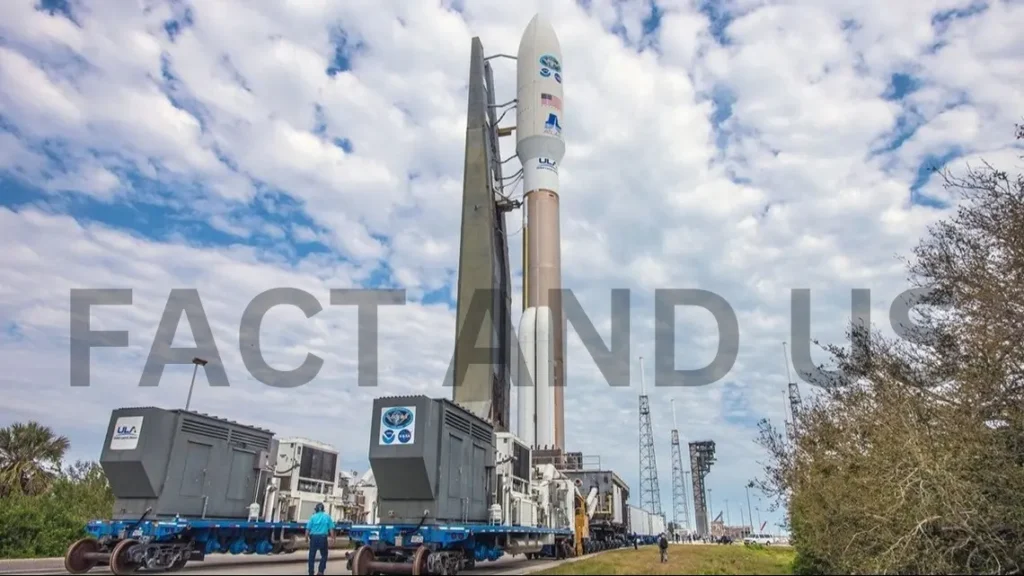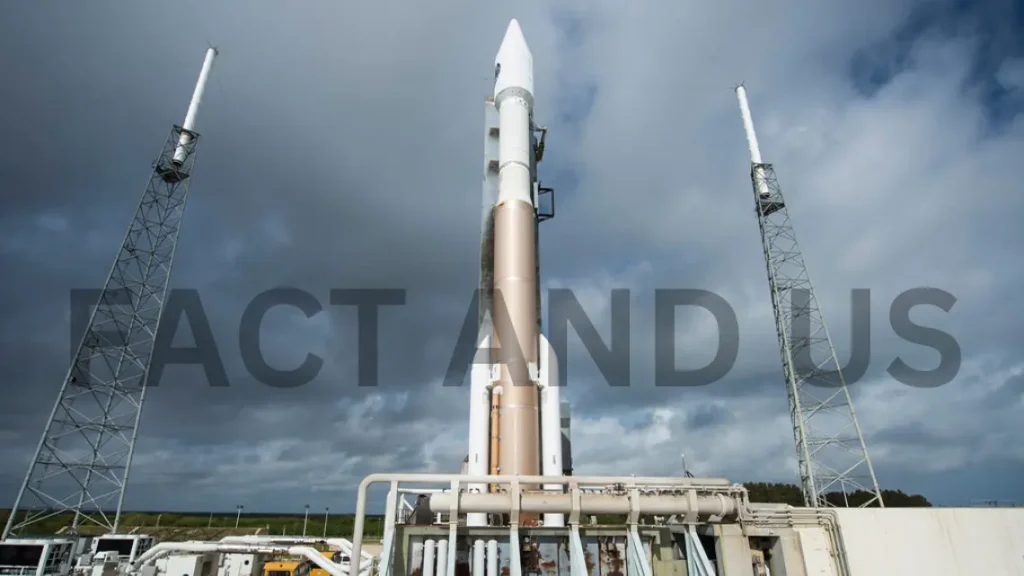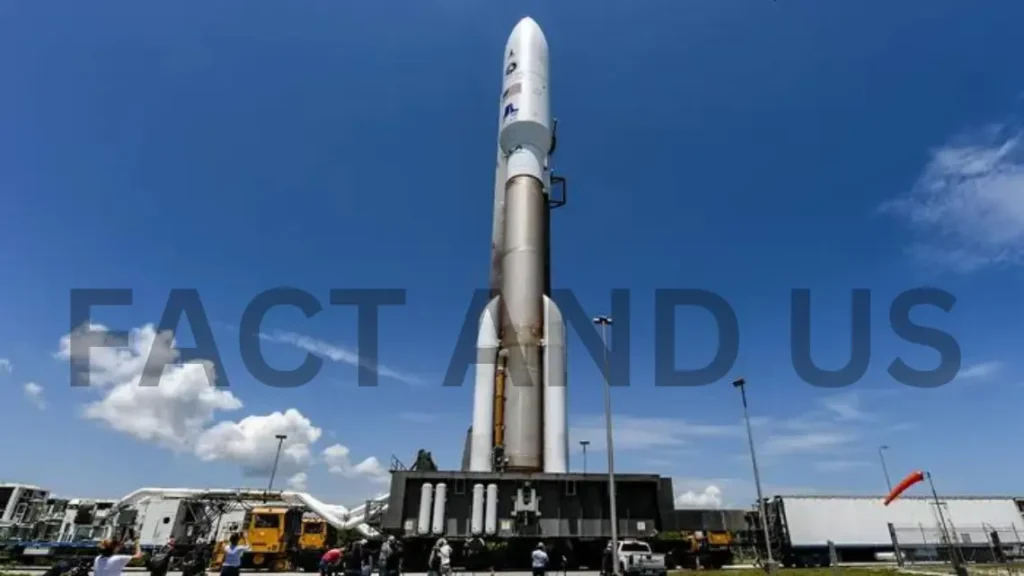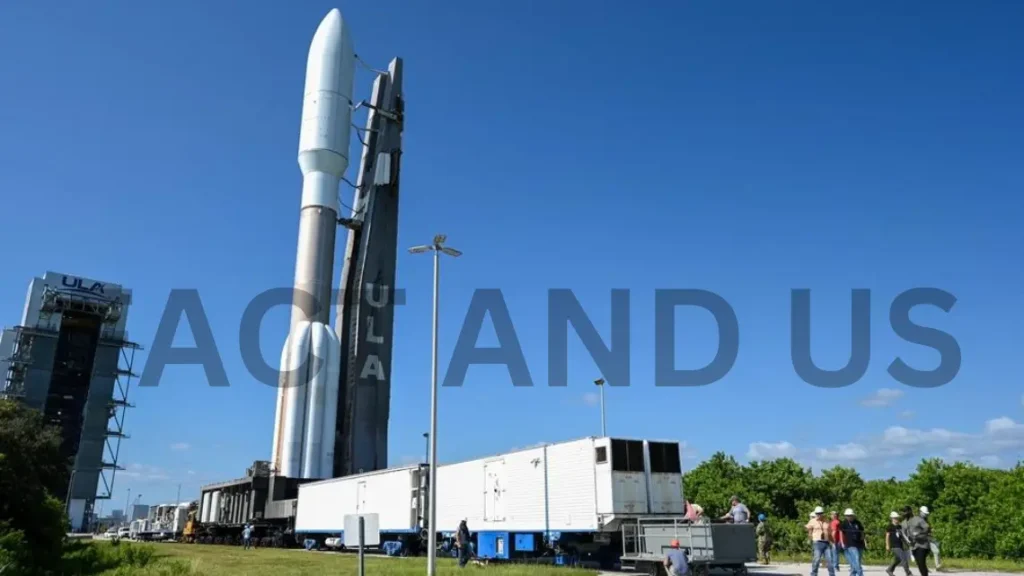United Launch Alliance is preparing for a Seminole moment for its Atlas 5 rocket. The launch vehicle is preparing to launch its 58th and final national security mission on Tuesday. The United States Space Force-51 (USSF-51) mission will also be the 100th national security mission launch for ULA.
Contents
ULA Atlas 5 Rocket

Following the completion of a launch readiness review on Friday, ULA rolled the rocket to the launch pad at Space Launch Complex 41 (SLC-41) at Cape Canaveral Space Force Station. First motion came shortly after noon on Saturday with the journey wrapping up after 12:30 p.m. EDT.
Liftoff is targeting Tuesday, July 30, during a three-hour window that opens at 6:45 a.m. EDT (1045 UTC).“This is a bittersweet moment for us. I’ve had the privilege of sitting console for the very first national security Atlas launch in 2007, STP-1 (Space Test Program 1) in March of that year and here we are with our last national security Atlas,” said Col. Jim Horne, Senior Materiel Leader of the Launch Execution Delta. “I do want to say thank you to the entire team, the government and ULA. It’s been a strong partnership over these last almost 20 years on this program and this has been our workhorse vehicle.”
Because of the nature of the launch, Horne declined to go into detail about the mission or if the flight was carrying a single payload or more than one. “I can’t say much about that his is a very important mission for national security in this time of great power competition, but that’s really all we can say at this time,” Horne said. The Atlas 5 launching the USSF-51 payload will fly in a 551 configuration, meaning it will be supported by five solid rocket boosters and a 17-foot (5 meter) diameter short payload fairing. The full stack stands about 196 feet (59.7 meters) tall.
Gary Wentz, ULA’s vice president of Government and Commercial Programs, said following this mission, out of the remaining 15 Atlas 5 rockets remaining, nine will fly in the 551 configuration in support of Amazon’s Project Kuiper constellation. “Every time you fly you learn a lot. And we’re flying five GEM 63’s on this mission,” Wentz said. “So, we’ll learn from that, continue to get data and going forward, we’ll apply that to the subsequent Atlas missions.”
Passing the baton

This final mission as part of the National Security Space Launch (NSSL) for the Atlas 5 rocket marks a pivot point for ULA. Following the USSF-51 launch, ULA will turn its full attention to its second certification flight of its Vulcan rocket following a successful debut in January.
“What we’ll do after this mission flies is we’ll do some checkout of the ground system with the [mobile launch platform], the Atlas MLP, verify all of that’s good, then we’ll bring in the Vulcan launch platform, do checkout of it and immediately go into erection of the booster and prepping for the Cert-2 mission,” Wentz said.“We won’t waste any time. It’ll be within a week and a half to two weeks we’ll have the hardware in process for the Cert. flight.”

As ground teams at the Cape were preparing to roll out the Atlas 5 rocket, ULA teams in Decatur watched as the barge named ‘Rocketship’ set sail with the third Vulcan booster on board. It will be used for the first NSSL mission a Vulcan rocket launches: USSF-87.Dr. Walt Lauderdale, the mission director for the USSF-51 mission, said the close working relationship between the U.S. Space Force and ULA during the development of Vulcan. He said that the dozens of missions flown on Atlas are also helping to inform him and his teams as they work through the certification process.
“When we look at working with ULA, that partnership, it’s really having that intimate knowledge and understanding of the vehicle systems, the ground systems, how they interface,” Lauderdale said. “You can do all the modeling in the world, but there’s no replacement for actual, real live data, real data from the vehicle and the system.”
“Cert-1 was a terrific flight. It allowed us to validate a lot of things that we’ve worked with them up to that point and looking to Cert-2 as Col. Horne just said, its gives us an opportunity to take all that we know from the models, all the qualifications, all the testing that we’ve done, and make sure that there’s no surprises,” Lauderdale added.
“That’s really what we’re looking for for Cert-2 is to make sure that there’s no surprises and that it’s well bounded by our experience and our qualification knowledge. “And that really does set the stage for us as we move forward into those Vulcan launches to go forward with confidence. Everything is looking good at this point and we’re not done til we’re done.”

A United Launch Alliance Atlas V rocket is rolled out to LC-41 at Cape Canaveral Space Force Station, FL Saturday, July 27, 2024. The rocket will lift mission USSF-51 to orbit. This is the final national security mission for the Atlas as ULA concentrates on it new Vulcan rocket. Craig Bailey/FLORIDA TODAY via USA TODAY NETWORK ULA Atlas V Rocket Rolls to Cape Canaveral LC-41 Ahead of Tuesday Liftoff
The United Launch Alliance (ULA) Atlas V rocket has made a significant move towards its final mission, rolling into position at Cape Canaveral’s Launch Complex 41 (LC-41) in preparation for its scheduled liftoff on Tuesday. This launch represents a critical milestone as it will be the last flight of the Atlas V rocket carrying a vital national security payload.
The Atlas V rocket, renowned for its reliability and performance, has been a workhorse for ULA, delivering numerous payloads into orbit over the years. Its versatility and proven track record have made it a preferred choice for a variety of missions, from commercial satellite deployments to high-profile national security launches. This final mission underscores the rocket’s pivotal role in supporting national defense and satellite infrastructure.
The rocket, which was transported to LC-41 on a specialized mobile launch platform, will undergo final preparations and checks ahead of the launch. Engineers and technicians are working around the clock to ensure that all systems are operational and that the rocket is ready for its final flight. The payload for this mission, a highly sensitive national security asset, underscores the importance of the launch and the need for a flawless execution.
The Atlas V’s departure from its assembly facility and arrival at the launch pad marks the culmination of extensive preparations. This final mission will be closely watched by both the aerospace community and national security officials, given the rocket’s history and the significance of its payload.

Cape Canaveral’s LC-41, a state-of-the-art launch pad equipped with advanced technology and infrastructure, is the site where the Atlas V will be prepared for its Tuesday launch. This facility has been instrumental in supporting numerous high-profile launches, and its readiness is crucial for the success of the upcoming mission.
As ULA prepares for the Atlas V’s last flight, there is a mix of anticipation and reflection within the aerospace industry. The rocket’s retirement will pave the way for the new generation of launch vehicles, but its legacy of successful missions and contributions to space exploration and national security will be remembered.
Tuesday’s liftoff will be a significant event, marking the end of an era for the Atlas V rocket while highlighting ULA’s ongoing commitment to advancing space launch capabilities and supporting critical national interests.
Stay connected with Fact and US for more such news.
